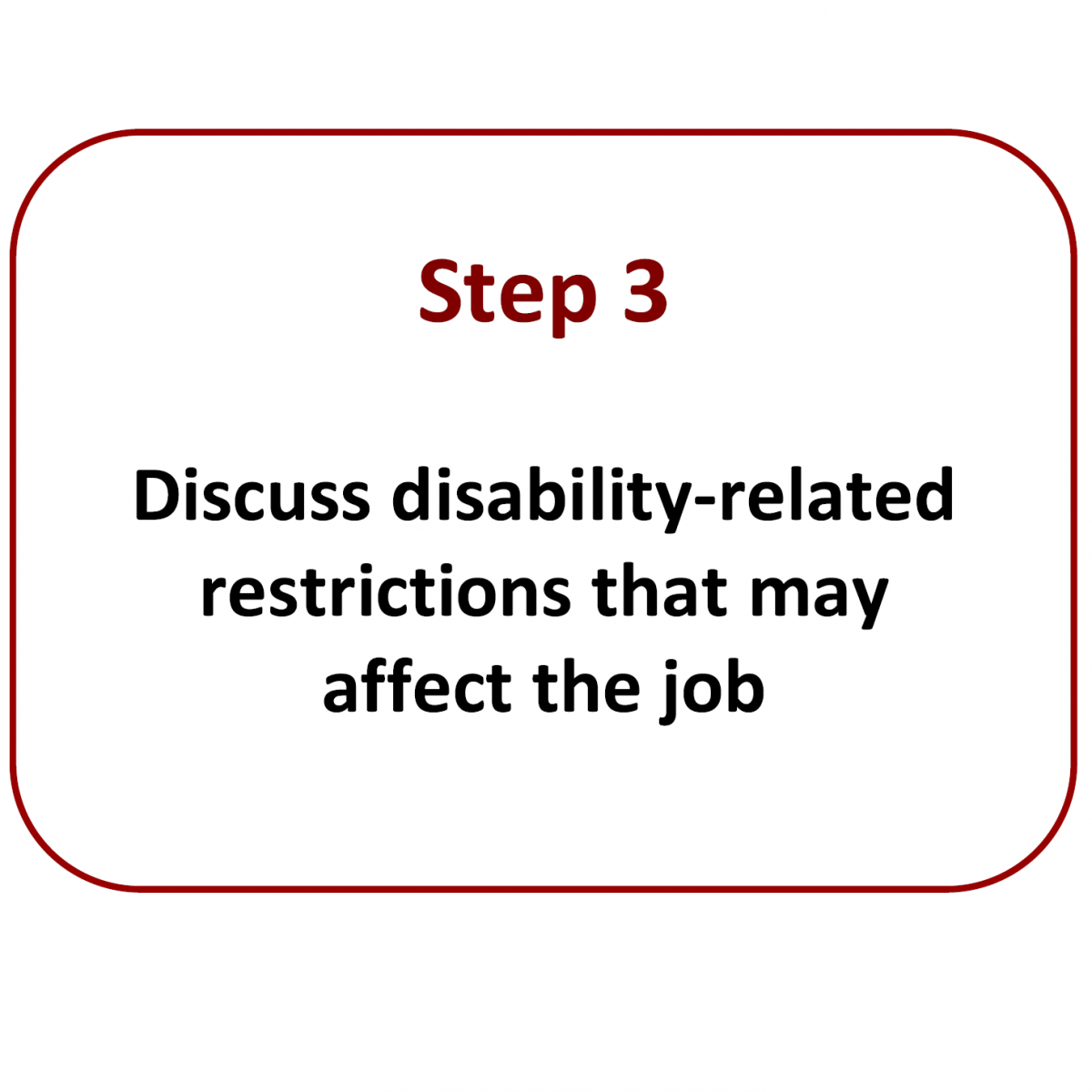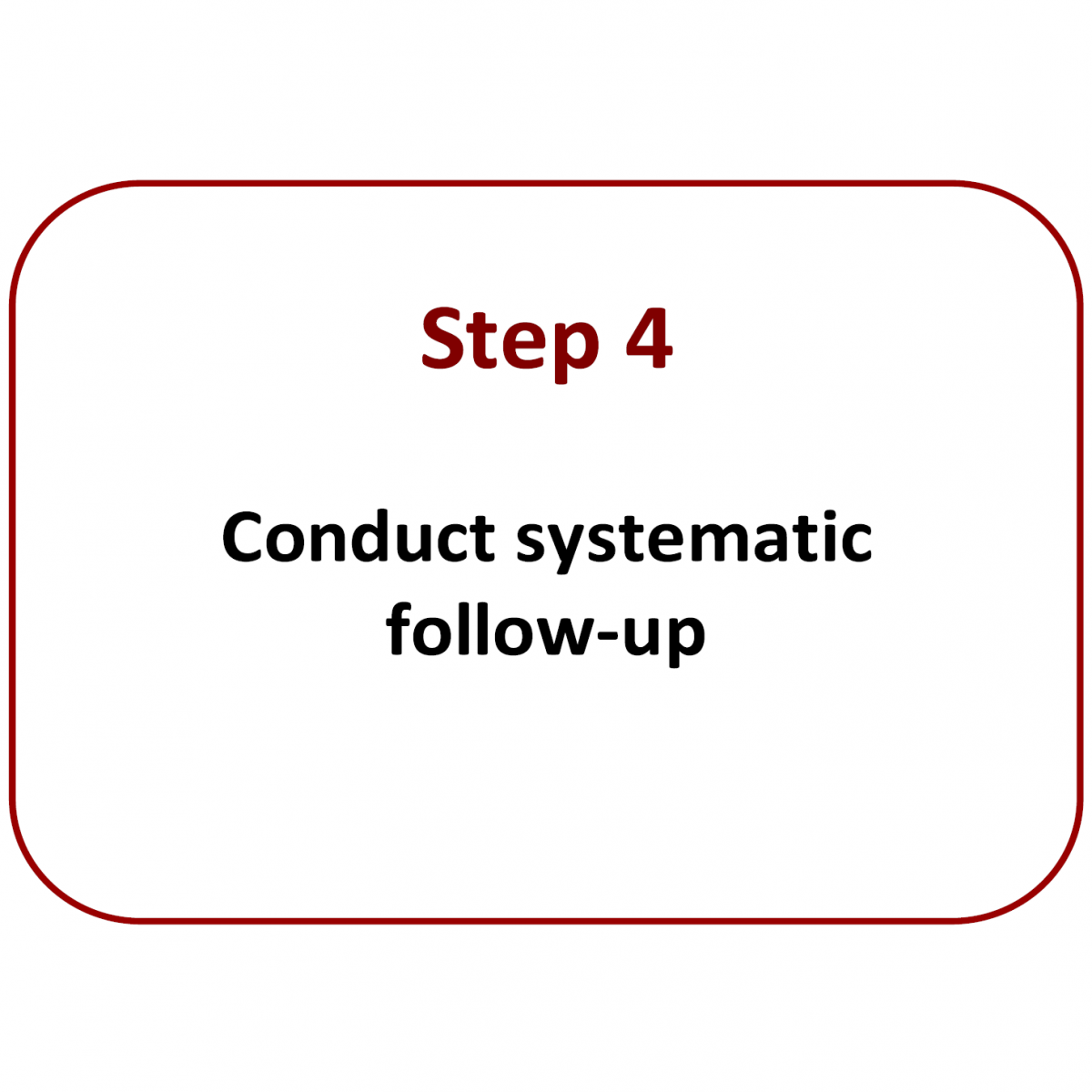Print-Friendly PDF | Large-Print PDF
The Reasonable Accommodation Interview
Technically, according to the EEOC (Equal Employment Opportunity Commission), the interactive process is not required under the ADA. However, this step allows the opportunity to streamline the reasonable accommodation process and ensure that effective accommodations will be provided.1
Please consider using the suggested guidance for reasonable accommodation interviews.




Step 1: Ensure That a Job Analysis Has Been Performed to Determine the Essential Functions
1. Review the employer's job analysis process.
a. An ADA-compliant job analysis process has been performed.
a. The essential job tasks identified include quantity and quality requirements.
b. The behavioral requirements of the jobs have been stated in measurable terms.
2. Review the employee's job description.
The essential functions of the job have been identified, including:
a. Physical requirements for performing the job
b. Behavioral characteristics essential for job performance.
c. Marginal functions not essential to job performance.
d. Minimum qualification requirements essential for the position.
Step 2: Request Related Documentation Regarding Employee’s ADA-Qualifying Disability
b. Employee has provided the medical professional a copy of the employee's job description with the essential functions listed and described in detail.
essential function of the job (some essential functions may not be affected at all), if necessary.
Step 3: Meet With the Employee to Discuss Disability-Related Limitations That May Affect the Job
- Review Employer’s Responsibilities under the ADA
- Statements such as the following have been used: “As an employer, I am responsible to make a good faith effort to …”:
- Provide reasonable accommodation for the employee in his or her current job. (Provide reasonable accommodation examples, if possible.)
- Provide equal employment opportunities.
- Provide accommodation unless to do so would be an undue hardship or pose a direct threat to the employee or other employees.
- Inform the employee of the consequences of failing to identify a reasonable accommodation which will assist the employee in performing
the essential functions of the position: the employee may be considered unqualified for the position and it may be necessary to discuss reassignment.
- Discuss Reassignment to Another Position
- Explain that reassignment under the ADA is:
- Lateral placement, not competitive hire (there are some exceptions with unions and seniority)
- Into a position for which the employee is qualified
- Only to a position that is open or will come open within a reasonable amount of time
- Explain that reassignment under the ADA is:
- Ask Disability Question
- Ask the employee, in a documented interview setting, if he or she considers himself or herself to be a person with a disability.
- Ask the employee, in a documented interview setting, if he or she considers himself or herself to be a person with a disability.
- Ask the Impact Question
- Ask the employee what impact their disability has or will have on their job performance.
- Ask the employee what impact their disability has or will have on their job performance.
- Review Essential Functions and Impact
- Review the essential functions of the job and ask what impact the disability has on each specific job function.
- Review the essential functions of the job and ask what impact the disability has on each specific job function.
- Brainstorm Potential Accommodations
- Brainstorm potential accommodations with the employee.
- Brainstorm potential accommodations with the employee.
- Agree to Provide Equal Employment Opportunity through Reasonable Accommodation
- Come to an agreement or resolution for providing equal employment opportunities through reasonable accommodation.
- Come to an agreement or resolution for providing equal employment opportunities through reasonable accommodation.
- Research Accommodations
- If no accommodation is identified, research accommodation solutions and alternatives with other professionals.
- If no accommodation is identified, research accommodation solutions and alternatives with other professionals.
- Keep Record of Reasonable Accommodation Interview
- Reasonable Accommodation Interview results are filed in the employee’s confidential medical file or the confidential file of the ADA Coordinator, not the personnel file.
Step 4: Follow-Up
Conduct Systematic Follow-Up
- Follow-up with the supervisor within 10 days.
- Follow-up with the supervisor within 1 month.
- Follow-up with the supervisor within 60 days.
- Discuss effectiveness of accommodation with employee.
- Document all follow-up information.
Formal Documentation and Record Keeping
For more information about reasonable accommodations:
 The Northwest ADA Center is a member of the ADA National Network. This fact sheet was developed under grant from the Administration for Community Living (ACL), NIDILRR grant #90DPAD0002. However, the contents do not necessarily represent the policy of the ACL, and you should not assume endorsement by the federal government.
The Northwest ADA Center is a member of the ADA National Network. This fact sheet was developed under grant from the Administration for Community Living (ACL), NIDILRR grant #90DPAD0002. However, the contents do not necessarily represent the policy of the ACL, and you should not assume endorsement by the federal government.
